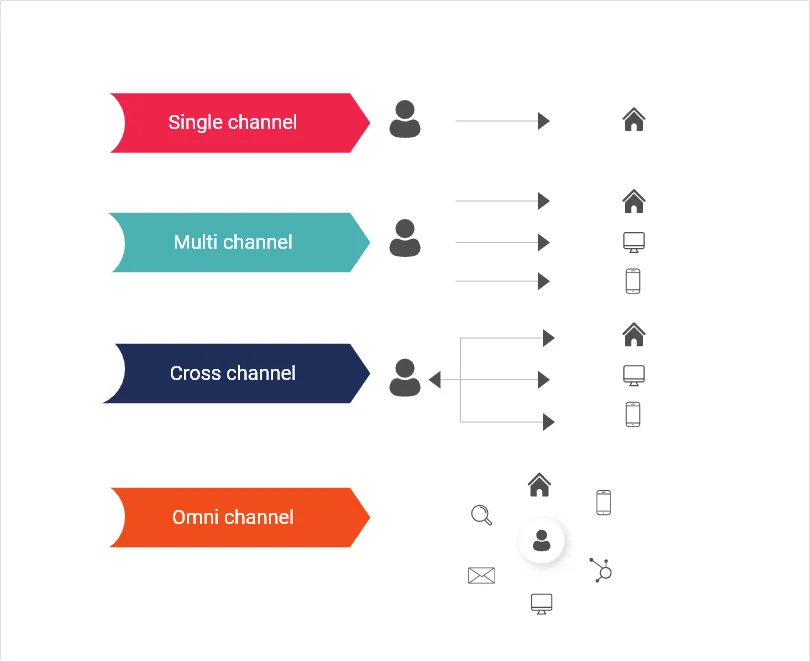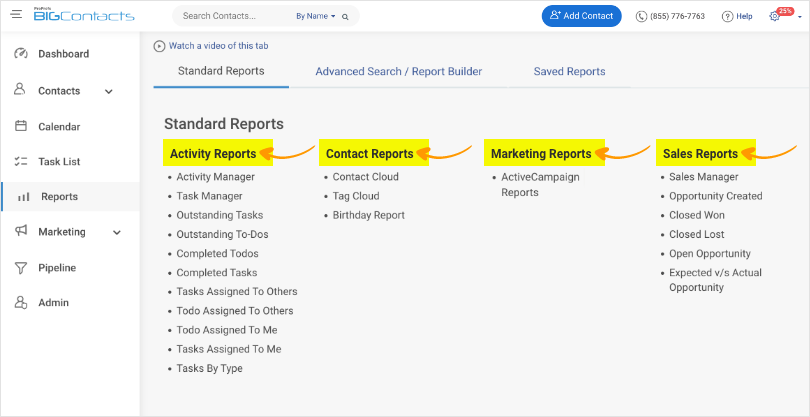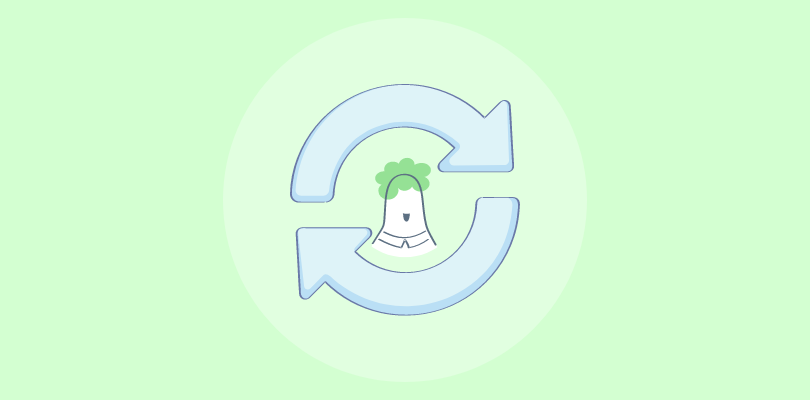You’ve got a brilliant product or service, but your potential customers aren’t converting. Sounds familiar?
Getting leads is easy—any decent ad campaign or content asset can get people through the door. But turning those leads into paying, long-term customers? That’s where most businesses stall.
As someone who’s helped businesses—from small startups to growing sales teams—bridge that gap, I can tell you this: success doesn’t come from chasing leads harder. It comes from nurturing smarter.
That’s why lead nurturing is no longer optional; it’s the backbone of a predictable, scalable revenue strategy.
In this guide, I’ll break down the full lead nurturing process—backed by real-world strategies, proven CRM workflows, and insights you can act on right now. Whether you’re leading a sales team, building a marketing funnel, or wearing all the hats as a founder—this is your roadmap to stronger relationships and higher conversions.
What Is Lead Nurturing?
Lead nurturing involves developing and maintaining relationships with potential customers or prospects over time through a series of actions.
“Approach each customer with the idea of helping him or her solve a problem or achieve a goal, not of selling a product or service.” – Brian Tracy
It involves nurturing prospects by educating buyers about your products and services to move them down the sales funnel. Essentially, it’s about guiding leads through every stage of their journey until they’re ready to purchase.
Want to know how to start nurturing leads right from their first interaction? Check out this guide on Lead Nurturing Best Practices With CRM Software for practical strategies.
Lead Nurturing Trends to Watch in 2025
Let’s explore the key trends shaping lead nurturing this year and how you can leverage them to nurture leads more effectively.
1. AI-Powered Personalization
In 2025, personalization goes beyond using a lead’s first name in emails. Artificial Intelligence (AI) enables you to analyze customer behavior and preferences, allowing for highly tailored content and interactions. By understanding what your leads are interested in, you can deliver the right message at the right time, increasing engagement and conversion rates.
2. Omnichannel Engagement
Your leads interact with your brand across various platforms—email, social media, chatbots, and more. An omnichannel approach ensures a seamless and consistent experience, regardless of where the interaction occurs. By integrating your communication channels, you can maintain a cohesive message and better guide leads through their buyer’s journey.
3. Interactive Content
Engaging your audience is more important than ever. Interactive content like quizzes, calculators, and polls not only captures attention but also provides valuable insights into your leads’ needs and preferences. This information allows you to tailor your nurturing strategies more effectively.
Create a Quiz Instantly With AI or Templates
4. Predictive Analytics
Predictive analytics uses historical data to forecast future behaviors. By identifying patterns in your leads’ actions, you can anticipate their needs and proactively address them. This foresight enables you to prioritize high-potential leads and allocate resources more efficiently.
5. Enhanced Data Privacy
With increasing concerns about data privacy, it’s essential to handle your leads’ information responsibly. Implementing transparent data practices and complying with regulations like GDPR builds trust and fosters stronger relationships with your audience.
6. Video Content
Video continues to be a powerful tool for engagement. Incorporating videos into your nurturing campaigns—such as product demonstrations, testimonials, or personalized messages—can convey information more effectively and create a more personal connection with your leads.
7. Integration of Sales and Marketing Efforts
Aligning your sales and marketing teams ensures a unified approach to lead nurturing. By sharing insights and strategies, both teams can work together to provide a consistent experience that moves leads smoothly through the funnel.
The Lead Nurturing Process
The lead nurturing process involves engaging and educating potential customers at each stage of their buying journey. Here are the stages of lead nurturing:
1. Lead Generation
Lead generation is the process of attracting potential customers to your business. It’s a crucial first step in lead nurturing, as it provides a steady stream of prospects that you can engage and convert into loyal customers.
Think of leads as seeds. You plant them, but they need care and attention to grow. Similarly, leads need to go through the lead nurturing funnel to progress through the sales funnel.
Want to attract better leads? Check out these 9 proven lead generation strategies.
2. Understanding Customer Needs
It’s not just about bombarding leads with sales pitches. Lead nurturing involves understanding their needs, providing relevant information, and answering their questions.
3. Highlighting Your Unique Value
Showcasing what sets your brand apart is crucial. Whether through personalized communications or highlighting your brand’s strengths, ensure your leads know why they should choose you.
4. Guiding Through the Sales Funnel
The prospect nurturing process is not the same for all leads. It’s about guiding leads through the sales funnel based on their unique needs and where they are in the buying process.
How Can Lead Nurturing Benefit Your Business?
Lead nurturing is extremely beneficial for businesses looking to thrive in today’s highly competitive market. But how exactly can lead nurturing benefit your business? Let’s figure out–
1. Builds Client Relationships
It’s all about trust and credibility. By consistently providing valuable information, you’re not just selling a product—you’re building a relationship with your leads.
When it comes time to make a purchase, leads are more likely to choose your business because of the relationship you’ve established.
2. Educates Customers About Your Product
Lead nurturing campaigns allow you to educate leads about the benefits of your offerings and address their concerns. By providing relevant information, you help leads make informed choices, ultimately leading to higher conversion rates.
3. Shortens the Sales Cycles
Keeping your brand at the top of your mind is key to speeding up the sales process. Lead nurturing best practices ensure that leads are constantly receiving relevant information, making them closer to a purchase decision.
As a result, sales cycles are shortened, and you can close deals faster. Personalized and targeted communication boosts conversion rates and increases your average order value (AOV), leading to greater revenue.
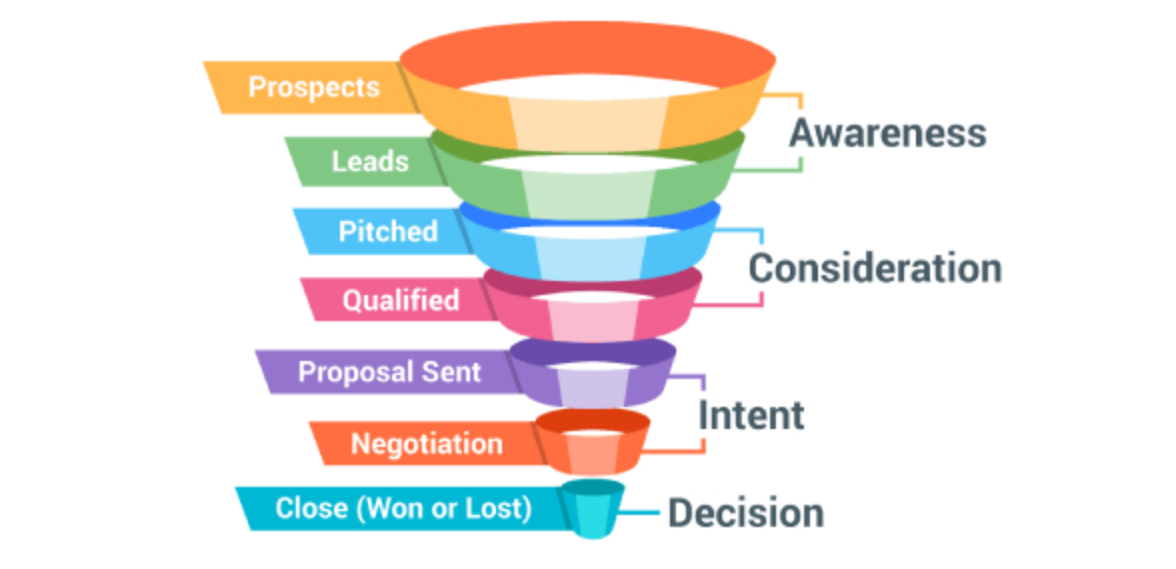
How to Create a Lead Nurturing Strategy
Building relationships with potential customers doesn’t happen overnight. That’s where a solid lead nurturing strategy comes in. Whether you’re starting from scratch or refining your current approach, here’s how to do it right:
1. Define Your Lead Profile
Knowing your audience inside out is the golden rule in sales and marketing. But when it comes to leads, understanding them can feel like cracking a code.
Here’s a simple breakdown of how to know your leads better and tailor your lead-nurturing B2B strategy accordingly–
- Segmentation: Don’t treat all leads the same. Segment the leads based on relevant criteria to tailor your messaging and approach. You can create contact lists based on properties like name, email, and phone number. This makes it easy to group and retarget customers to boost sales. This method helps you better organize and manage leads.
- Track Lead Behaviour: Look at how different groups convert to find hidden opportunities and improve your lead nurturing strategy. This helps you see what’s working and what you can do better.
- Ask the Right Questions: When reaching out to leads, ask open-ended questions that reveal insights into their pain points, preferences, and buying motivations.
- Leverage Tools and Data: Utilize analytics tools and CRM software to gather data and track interactions with leads.
By taking these steps, you can create a lead-nurturing B2B strategy that speaks directly to the needs and preferences of your audience.
2. Build Your Email List
Building a solid email list is a fundamental step in the realm of lead nurturing best practices. But it’s not just about collecting as many email addresses as possible; it’s about fostering loyal connections with people who are genuinely interested in what you have to offer.
- Offer Value with Gated Content: One effective tactic is to offer gated content, such as ebooks, whitepapers, or exclusive guides, in exchange for email addresses. This not only adds value for your audience but also helps you capture leads who are interested in your niche or industry.
- Engaging Newsletters: Invite people to subscribe to your engaging newsletter. Craft content that provides value, educates and entertains your subscribers. You can keep your audience engaged with your product by consistently delivering quality content.
- Utilize Pop-Up Forms: Incorporate engaging animated popup forms on your website’s interface to prompt visitors to subscribe to your newsletter or gain access to special perks. These forms can be very beneficial in capturing leads’ attention and encouraging them to take action.

Moreover, using a CRM tool like BIGContacts can streamline your lead nurturing efforts. With features like automated email campaigns and lead management, you can efficiently nurture leads through personalized communication and targeted follow-ups.
Remember, to successfully nurture leads, it is not important to amass an extensive email list. It is all about cultivating meaningful relationships with your subscribers.
3. Effective Follow-Ups
Effective follow-ups are essential for nurturing leads and guiding them through the sales pipeline. A well-managed sales pipeline allows sales representatives to clearly visualize where each opportunity stands in the sales funnel, ensuring that follow-ups are timely and relevant.
Here’s how effective follow-ups can enhance lead nurturing:
- Understanding the Sales Pipeline: A sales pipeline provides a visual representation of every stage of the sales process. This helps identify the current position of each lead. Sales reps can prioritize their efforts based on the lead’s stage in the funnel. Leads closer to the decision stage might need more immediate and detailed attention than those at the awareness stage.
- Scheduled Follow-Ups: Set reminders for follow-ups based on the critical points of each stage in the sales pipeline. For instance, if a lead has just received a proposal, schedule a follow-up within a few days to discuss any questions or concerns.
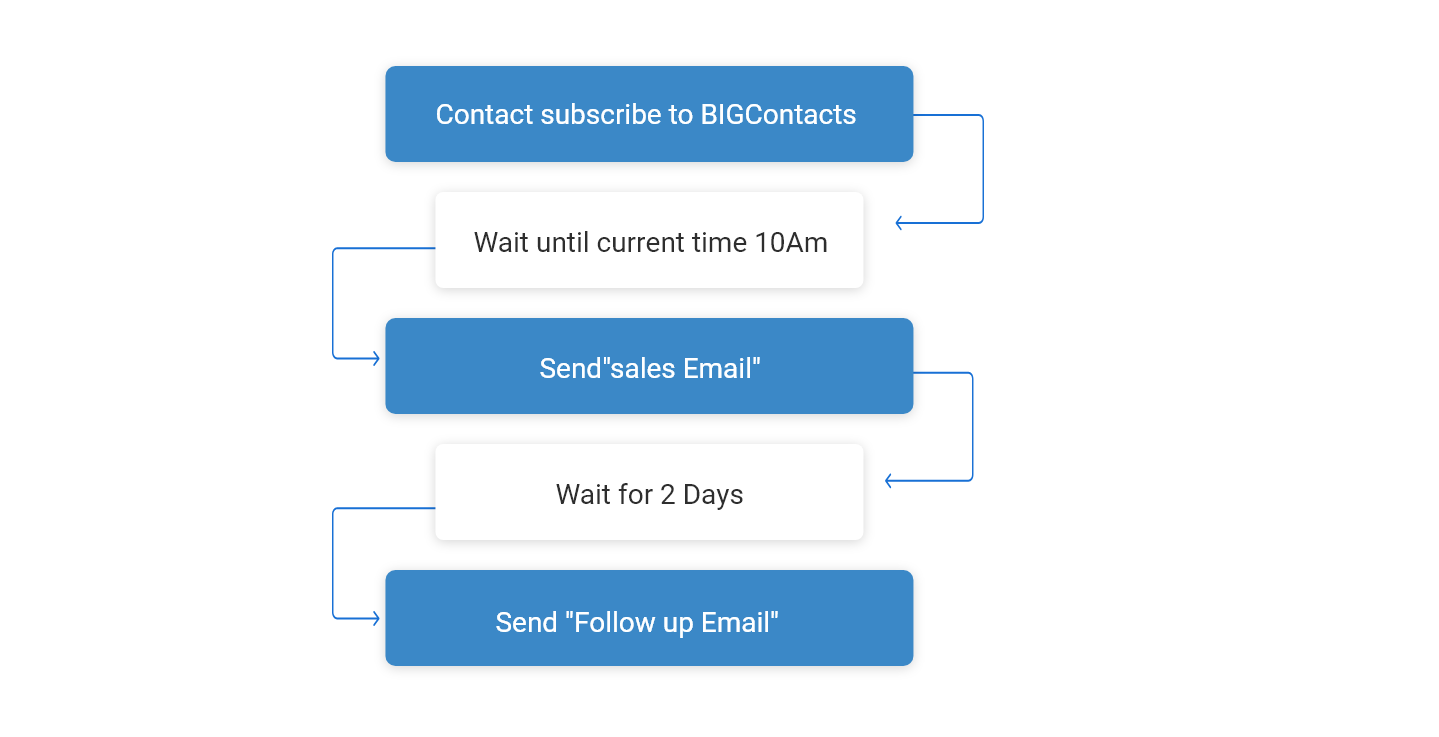
Customize the follow-up messages according to the lead’s progress through the pipeline. The follow-up content at the consideration stage should differ from that of a lead at the initial contact stage.
- Consistent Engagement: Keep the leads engaged by providing regular updates about your products or services, new offers, and relevant industry news that might interest them. Use follow-ups as an opportunity to solicit feedback. This not only shows that you value the lead’s opinion but also helps in refining your approach.
- Leveraging Technology: Utilize Customer Relationship Management (CRM) tools to automate follow-ups, track interactions, and analyze lead behavior. Implement email automation to send out regular, scheduled communications to keep the leads warm.
Looking for the right tools to streamline your follow-ups? Check out these top 10 lead nurturing software picks for 2025.
4. Implement Nurturing Sequences
After creating a quality email list, it’s time to take your leads on a journey with nurturing sequences that engage and guide them toward becoming loyal customers.
A lead nurturing sequence consists of well-timed, engaging emails designed to build a strong connection with potential customers and move them along the buyer’s journey. You can use CRM tools like BIGContacts that integrate email marketing to streamline growth. It helps you track sales pipelines and automate email campaigns all in one place.
Personalization is also crucial for building a strong connection with your leads. Craft your content to their interests, preferences, and behaviors to make them feel understood and valued by your brand.
- Welcome Email: Start your nurturing sequence with a warm welcome email to introduce your brand and set the tone for future communications. Use this opportunity to thank your leads for joining your email list and give them a brief overview of your product through the emails.
- Informative Emails: Follow up with informative emails that educate your leads about your industry or product. Share helpful information about your area of expertise to show your knowledge and gain the trust of your audience.
- Exclusive Offers: Introduce exclusive offers or promotions to incentivize your leads to take action. Whether it’s a limited-time discount or a free trial, make sure your offer is compelling enough to encourage conversions.
By implementing nurturing sequences like these, you can effectively engage your leads and move them closer to becoming loyal customers.
5. Track Results
Once you’ve implemented your lead nurturing plan, tracking and regularly evaluating your results is crucial. By keeping tabs on your campaign’s outcomes, you’ll gain valuable insights into what’s working well, what needs improvement, and where you can refine your strategies for better success.
Mapping Lead Nurturing Content to the Sales Funnel
Not all leads are ready to buy the moment they find you—and that’s completely normal. That’s why it’s important to share the right kind of content based on where a lead is in their journey. Think of it like guiding a friend through a decision: early on, they need information; later, they need proof; and when they’re almost ready—you give them a reason to act.
Here’s how you can align your lead nurturing content with each stage of the sales funnel:
1. Awareness Stage
This is where leads are just discovering your brand. They’re not ready to be sold to yet—they’re simply looking for information or solutions to a problem.
Best content to share:
- Helpful blog posts
- Educational guides and how-to articles
- Fun, value-packed quizzes
- Infographics or short explainer videos
Goal: Educate, build trust, and stay top-of-mind.
2. Consideration Stage
Now your leads are evaluating options. They know what they need and are comparing solutions—including yours.
Best content to share:
- Case studies and testimonials
- Webinars or live Q&A sessions
- Product comparison sheets
- In-depth industry insights
Goal: Show your value and help them understand why your solution stands out.
3. Decision Stage
Your lead is ready to buy—or almost there. This is the moment to make the experience frictionless and compelling.
Best content to share:
- Free trials or product demos
- Limited-time discounts
- ROI calculators or pricing guides
- Onboarding walkthrough videos
Goal: Make saying “yes” easy and risk-free.
When you tailor your messaging this way, you’re not just sending content—you’re solving problems at exactly the right time. That’s what great lead nurturing is all about.
Omnichannel Lead Nurturing: Beyond Email
Your prospects don’t stick to just one channel—and neither should you.
Omnichannel lead nurturing is about showing up where your leads are—whether that’s in their inbox, on their phone, in a webinar, or while they’re browsing social media. When your communication is timely, relevant, and consistent across platforms, you build stronger trust and increase the chances of conversion.
Here are some effective ways to go beyond email and build deeper connections:
1. Social DMs (LinkedIn, Instagram, and more)
Social platforms aren’t just for broadcasting—they’re great for personal outreach. A direct message at the right time can turn a casual follower into a qualified lead.
- Share relevant resources or content
- Offer a helpful guide
- Start a one-on-one conversation
2. SMS Follow-Ups
Text messaging is one of the fastest ways to reach leads directly. Whether it’s a reminder or a short update, SMS and WhatsApp create a personal touch—just be sure to get consent and keep it relevant.
- Follow up after a form submission or demo
- Send reminders or exclusive offers
- Check in with a simple question
3. Webinars & Virtual Events
Webinars are a powerful way to nurture leads during the consideration stage. They help educate, build authority, and offer real-time interaction.
- Host product walkthroughs
- Run live Q&A sessions
- Share expert insights or customer stories
4. Chat Tools
Live chat and intelligent chatbots allow you to engage leads in real time while they’re already on your website. It’s a great way to reduce friction and answer questions immediately.
- Qualify visitors quickly
- Route leads to the right team
- Offer additional resources or demo links
5. Retargeting Ads
Retargeting allows you to stay visible to leads who’ve already interacted with your brand. It keeps your product top of mind and helps push leads closer to conversion.
- Promote relevant blog posts, webinars, or offers
- Highlight free trials or pricing pages
- Personalize ads based on previous behavior
Why Omnichannel Works
The goal isn’t to be everywhere—it’s to be strategic. When your lead nurturing messages are aligned across different touchpoints, your leads get a consistent experience that builds trust and encourages action.
Using a CRM like BIGContacts can help you manage and automate this process—keeping all channels connected and your messaging cohesive.
Top 5 Lead Nurturing Mistakes (And How to Avoid Them)
Even the best lead nurturing strategies can fall flat if they’re built on the wrong foundations. Sometimes it’s not about what you’re doing—but what you’re unintentionally overlooking. Here are five common mistakes that could be holding your campaigns back—and how to fix them.
1. Over-Automation
What Goes Wrong:
Too much automation can make your nurturing feel robotic. Leads receive the same emails, the same timing, and zero human touch—making your brand easy to ignore.
How to Fix It:
Use automation strategically. Build workflows that include branching logic, triggers based on behavior, and opportunities for personal interaction. Don’t let the system run without oversight—add regular check-ins to fine-tune your flows.
2. Generic Content
What Goes Wrong:
One-size-fits-all messaging leads to one-size-fits-none results. If your emails or offers don’t speak to a lead’s specific needs or pain points, they’ll likely tune out.
How to Fix It:
Personalize your content based on interests, funnel stage, and past behavior. Use dynamic content blocks in your emails or landing pages. Leads should feel like you “get” them, not like they’re just another name in the database.
3. No Segmentation
What Goes Wrong:
Treating all leads the same results in irrelevant messaging. For example, sending advanced product demos to someone who just discovered your blog post.
How to Fix It:
Segment your audience by role, industry, behavior, or funnel stage. Even basic segmentation—like separating new subscribers from long-time followers—can improve engagement dramatically.
4. Lack of Follow-Up
What Goes Wrong:
You capture the lead… and then go quiet. Leads that were once warm quickly go cold when they don’t hear from you.
How to Fix It:
Create a consistent follow-up plan. Use reminders, automated drip campaigns, and check-in triggers in your CRM. Even a short message can keep the relationship alive and moving forward.
5. Misaligned Sales and Marketing Handoff
What Goes Wrong:
Leads fall through the cracks when marketing thinks a lead is ready for sales, but sales isn’t aligned—or vice versa. The result: poor experience and missed opportunities.
How to Fix It:
Define clear criteria for what qualifies as a sales-ready lead (SQL). Use lead scoring and regular sync meetings between sales and marketing to align expectations and share context.
6 Best Lead Nurturing Best Practices
Lead nurturing isn’t just about collecting leads; it’s about cultivating relationships and guiding prospects through the buyer’s journey. To excel in this essential aspect of marketing, you need to employ the best practices and strategies.
Here are some of the lead-nurturing best practices:
1. Lead Scoring
Lead scoring is like giving grades to your leads, helping you focus on the ones most likely to buy. It’s done by tracking what leads do, like visiting your website or opening emails and giving them points based on their actions.
Here’s how it works:
- Know Your Criteria: Decide what matters most to your sales process, like demographics, behavior, or website visits.
- Assign Points: Each action gets a score. For example, filling out a form might earn more points than just opening an email.
- Set Tiers: Group leads into categories like “Cold,” “Warm,” and “Hot” based on their total points.
- Prioritize Leads: Focus on the hottest leads first, saving time and resources.
Lead scoring allows you to work smarter and easily convert leads into customers.
2. Contact Management
Contact management is the backbone of effective lead nurturing. By keeping track of your contacts’ details, you can customize your messages to suit their needs and guide them through the sales process smoothly.
With the help of CRM and contact management software, startups and micro-businesses can streamline their contact management process without breaking the bank.
Features like unlimited custom fields, automated emails, and task tracking help you stay organized and responsive to your leads’ needs.
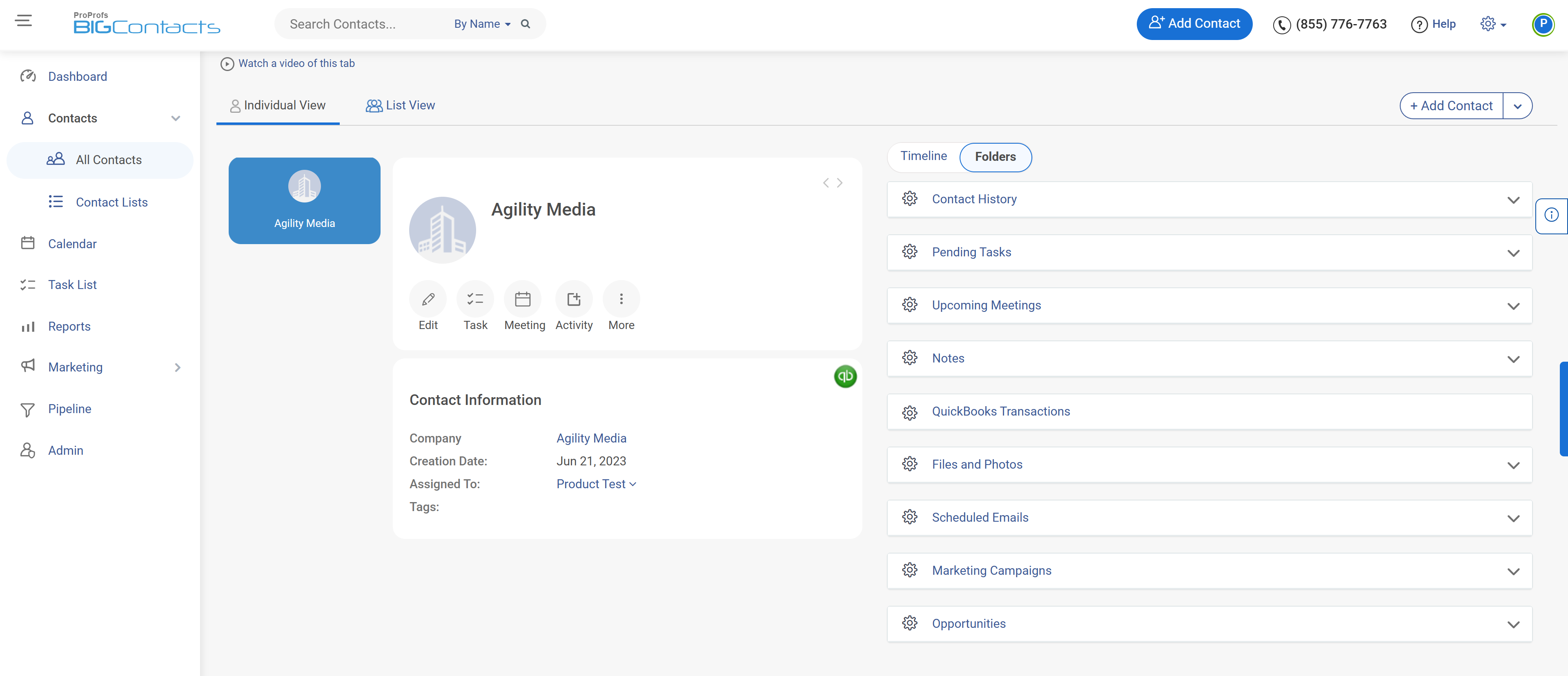
Benefits of contact management in lead nurturing include:
- Personalized Communication: Find out what your contacts are interested in and how they behave so that personalized messages that boost engagement and conversion rates can be sent to them.
- Improved Follow-up: Never miss a follow-up opportunity with automated reminders and alerts, ensuring timely and consistent communication with your leads.
- Efficient Campaign Management: Streamline your marketing efforts by segmenting contacts based on demographics, behavior, or interests, allowing you to deliver tailored campaigns that resonate with your audience.
By leveraging contact management tools, you can enhance your lead nurturing process, build stronger relationships with your prospects, and ultimately drive more conversions.
3. Segmentation
Segmentation is key to successful lead nurturing. You can offer more targeted and relevant content by categorizing your leads into groups based on specific criteria, increasing engagement and conversion rates.
Here’s how segmentation works:
- Two-Dimensional Approach: Start with two segmentation dimensions: the buying stage and industry. This balance keeps things manageable without overwhelming complexity.
- Segments and Subsegments: Each dimension creates segments, and further divisions within those segments create subsegments. This hierarchy allows for precise targeting without losing sight of the bigger picture.
- Personalized Messaging: Tailor your content to resonate with each segment’s unique characteristics, whether it’s their job title, industry, or current stage in the buying process. This ensures that your messages reach the right places and reduce unsubscribes.
- Improved Engagement: You’ll see higher engagement rates and more qualified leads moving through the sales funnel by delivering content that caters to your leads’ needs and interests.
Hyper-personalization takes personalization to new heights by delivering customized content, messaging, and offers based on individual preferences, behavior, and needs.
Here’s how to implement hyper-personalization effectively:
- Collect Comprehensive Data: Gather complex data, including demographics, behavioral insights, transaction history, real-time data, and contextual factors.
- Utilize Tools: Website analytics, CRM software, and data warehouses are used to collect and analyze data efficiently.
- Segmentation: Segment leads into specific groups based on their characteristics to ensure targeted messaging.
- Customized Content: Develop personalized messages, emails, content, or product offers that resonate with each segment, providing the right content or offer at the right time.
By embracing hyper-personalization, you can significantly increase the likelihood of converting leads into customers by delivering relevant and timely experiences tailored to their unique needs and preferences.
4. Email Marketing
Email marketing is a powerhouse tool in lead nurturing, helping businesses cultivate relationships and guide prospects through the sales process with personalized and on-time communication.
Here’s how email marketing boosts lead nurturing efforts:
- Personalized Communication: Send targeted emails based on where prospects are in the sales cycle, increasing relevance and engagement.
- Automated Campaigns: Use drip campaigns to deliver emails, keeping leads engaged and moving forward automatically.
- CRM Integration: Tools like BIGContacts combine CRM and email marketing functionalities, allowing you to manage contacts, send sales emails, and automate campaigns in one platform.
- Streamlined Workflow: Keep track of all sales activities, organize contacts, and automate marketing drips, making it easier for your team to manage leads effectively.
Incorporating email marketing into your lead nurturing strategy is a great way to build relationships, drive engagement, and, ultimately, boost sales. After incorporating email sequence strategy for lead nurturing you can explore email nurture campaign examples to see how successful businesses create engaging sequences.
5. Multichannel distribution
Spreading your efforts across multiple channels is key to success in lead nurturing. By using different ways to reach out to leads, you can reach more people and stay connected with prospects no matter where they are.
Here’s why multichannel distribution is crucial:
- Broadened Audience Reach: Engaging with leads through various channels allows you to connect with a larger audience, increasing your chances of conversion.
- New Revenue Streams: Maintaining connections across channels can uncover new opportunities and revenue streams, driving business growth.
Incorporating multichannel distribution is one of the lead nurturing best practices and ensures that you’re reaching prospects effectively and maximizing your chances of converting them into customers.
6. Marketing automation
Marketing automation is the engine behind successful lead nurturing strategies. A marketing automation platform allows you to simplify the marketing processes, target specific buyer personas effectively, and nurture lasting relationships with potential customers.
Here’s why marketing automation is essential:
- Scalability: As your strategy grows, marketing automation platforms help you identify, segment, and target unique buyer personas efficiently.
- Flexible Communication: Develop adaptive communications at scale, creating pathways for nurturing leads as they progress through the buyer’s journey.
- Building Relationships: Establish and maintain connections with prospects, increasing click-through rates and fostering brand advocacy.
- Data-Driven Optimization: Analyze buyer data to gauge interest, monitor behavior, and optimize future campaigns, ultimately increasing ROI.
By leveraging marketing automation, you can create personalized experiences for your audience, drive engagement, and drive conversions, ultimately fueling business growth.
Top Lead Nurturing Stats in 2025
1. 92% of businesses say using CRM software is crucial for hitting revenue targets.
Knowing that CRM software helps boost revenue is key for any business. It’s like having a secret weapon for making more sales and earning more money.
2. Emails in lead nurturing sequences get 4 to 10 times more responses than regular email blasts.
Sending out individual emails just doesn’t have the same impact as nurturing leads over time. Building relationships and making your brand familiar really works wonders in these campaigns.
3. Nurtured leads tend to make huge purchases that are 47% bigger.
Nurtured leads aren’t afraid to spend more because they trust your brand. When customers feel confident in what you offer, they’re more likely to buy big.
4. 56% of marketers believe that sending customized content is the most crucial part of lead nurturing.
When sales and marketing teams use a CRM system with lead nurturing tools, customers get the right content, leading to more sales.
5. Using a good CRM tool can boost sales by up to 29%.
The right CRM makes lead nurturing easier and can even help automate tasks like scoring leads, leading to more successful sales.
Transform Your Leads into Profits With Lead Nurturing
Lead nurturing builds lasting client relationships by guiding them through their purchasing journey. Segmentation, email marketing, and multichannel distribution are crucial in effective lead nurturing, helping nurture prospects across various touchpoints.
Effective strategies and tools can enhance lead conversion and foster deep connections with customers.
Moreover, getting started with lead nurturing doesn’t have to involve a hefty upfront investment. For example, BIGContacts offers a free plan for its lead nurturing software, allowing you to explore and utilize powerful tools without financial commitment. This tool provides an excellent opportunity for you to test the waters of lead nurturing software and create broader marketing strategies.
Frequently Asked Questions
What are the types of lead nurturing campaigns?
Lead nurturing campaigns can take several forms. Educational campaigns provide valuable information, guiding leads down the sales funnel with insights and tips. Drip campaigns use automated emails to engage leads over time.
Re-engagement campaigns aim to win back dormant leads, and Personalized campaigns target specific needs or behaviors, customizing content to resonate with each lead.
Which is the best tool for lead nurturing?
BIGContacts CRM is an excellent tool for lead nurturing, offering comprehensive features to streamline your sales process. Its visual and intuitive pipeline management allows you to build a custom sales pipeline that matches your sales cycle.
Track team activity and performance, generate delightful reports and stats and automate sales activities with BIGContacts CRM.
Why is lead nurturing important?
Lead nurturing is crucial because it helps build strong relationships with potential customers. By nurturing leads, businesses can guide prospects through each stage of the buying journey, providing valuable information and addressing concerns along the way.
Moreover, nurturing leads can shorten sales cycles, increase conversions, and contribute to long-term business growth.
What’s the difference between lead generation and lead nurturing?
Lead generation is about attracting potential customers—getting them into your pipeline through channels like ads, content, or signups. Lead nurturing, on the other hand, begins after you've captured those leads. It focuses on building trust, sharing relevant content, and guiding leads through the sales funnel until they're ready to buy.
Can automation hurt lead nurturing?
Automation can be a powerful tool—but only when used wisely. Over-automation can make interactions feel robotic and impersonal, which pushes leads away. The key is to blend automation with personalization: tailor content based on behavior, add human touchpoints, and regularly review your workflows. Used thoughtfully, automation enhances nurturing without sacrificing authenticity or connection.
FREE. All Features. FOREVER!
Try our Forever FREE account with all premium features!


